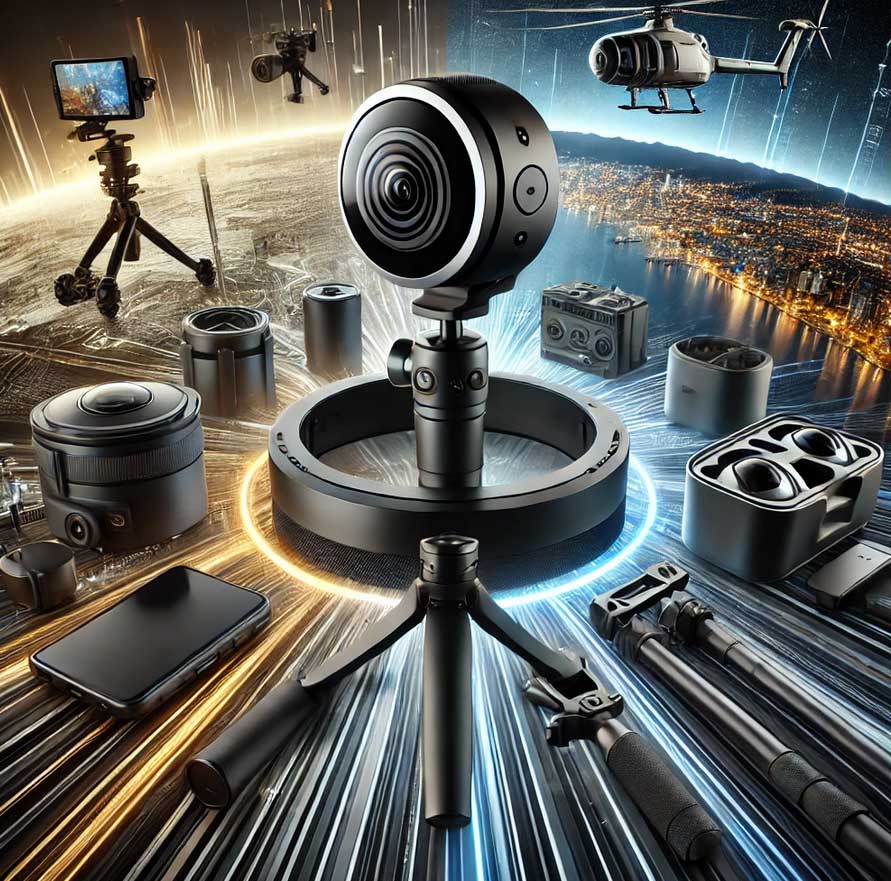
360-Degree Camera: A Comprehensive Guide for Better Marketing and Sales
Buying Guide for a 360-Degree Camera
-
Image and Video Quality
-
Higher resolution ensures clearer images and videos.
-
Cameras with 5.7K resolution or higher are recommended.
-
-
Image Stabilization
-
Built-in stabilization technology prevents blurry images during movement.
-
-
Design and Portability
-
Lightweight and durable cameras with an ergonomic design are ideal for various activities.
-
-
Water Resistance
-
If using in humid environments or underwater, check for waterproof capabilities.
-
-
Battery Life
-
Consider continuous recording time to ensure it meets your needs.
-
-
Software and Editing Features
-
User-friendly apps for editing and sharing content improve the overall experience.
-
Comparison of Popular 360-Degree Camera Brands
-
Insta360 X3 Waterproof 360 Action Camera
-
Image Quality: 5.7K video recording with a 1/2-inch sensor.
-
Features: Advanced stabilization, waterproof up to 10m, invisible selfie stick effect.
-
Pros: Compact design, high-quality video, excellent editing features.
-
Cons: Lenses are prone to damage and require extra care.
-
-
Insta360 ONE RS 1-Inch 360 Edition
-
Image Quality: Dual 1-inch sensors with 8K recording.
-
Features: Excellent low-light performance, modular design, efficient stabilization.
-
Pros: Unmatched image quality, ideal for professional filming.
-
Cons: Larger size and higher price compared to competitors.
-
-
GoPro HERO12 Black Action Camera
-
Image Quality: 5.3K video with dual lenses.
-
Features: HyperSmooth stabilization, waterproof up to 5m, multiple shooting modes.
-
Pros: User-friendly interface, durable build, 360-degree audio.
-
Cons: Average battery life, no RAW format support for photography.
-
-
-
Image Quality: Dual 1-inch sensors with 23MP photos and 4K video.
-
Features: RAW photo support, slim and portable design.
-
Pros: High-quality photography, great for professionals.
-
Cons: Expensive, limited video recording duration.
-
Marketing Strategies for Better Sales of 360-Degree Cameras
-
Create Educational Content: Offer videos and articles explaining how to use and benefit from 360-degree cameras.
-
Enhance Customer Experience: Provide in-store testing opportunities or online tutorials.
-
Leverage Social Media Advertising: Use platforms like Instagram and YouTube to showcase product capabilities.
-
Collaborate with Influencers: Partner with content creators in photography and videography to promote the product.
-
Offer Discounts and Special Deals: Run promotional campaigns during special events to attract more buyers.
By providing detailed comparisons and practical information, you can help customers choose the best 360-degree camera for their needs and boost your sales effectively. 🚀






